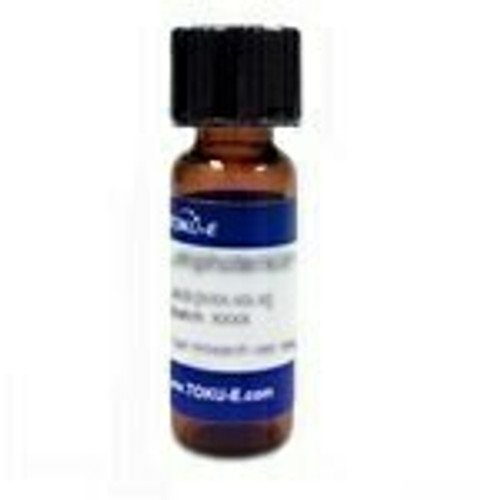Actinomycin D is an antineoplastic antibiotic that inhibits cell proliferation by acting as a cytotoxic inducer of apoptosis against tumor cells.
This product is considered a dangerous good. Quantities above 1 g may be subject to additional shipping fees. Please contact us for specific questions.
We also offer:
- Actinomycin ReadyMade Solution (A227)
| Mechanism of Action | Actinomycin is a cyclic polypeptide-containing antibiotic that binds to DNA and inhibits RNA polymerase activity. Because Actinomycin can bind DNA duplexes, it can also interfere with DNA replication, although other chemicals such as hydroxyurea are better suited for use in the laboratory as inhibitors of DNA synthesis. Actinomycin D and its fluorescent derivative,7-aminoactinomycin D (7-AAD), are used as stains in microscopy and flow cytometry applications. The affinity of these stains/compounds for GC-rich regions of DNA strands makes them excellent markers for DNA. 7-AAD binds to single stranded DNA; therefore it is a useful tool in determining apoptosis and distinguishing between dead and alive cells. |
| Plant Biology Applications | Actinomycin D is used in plant tissue culture to inhibit plant growth through tissue deformation. It also acts as an RNA-synthesis inhibitor. Exposure of Actinomycin D at concentrations of 12-20 ug/ml for 3-4 hours in pea and soybean plants caused significant tissue deformation. |
| Cancer Applications | Actinomycin-D is used to treat Wilms' tumor, rhabdomyosarcoma, germ cell tumors, gestational trophoblastic disease, Ewing's sarcoma, testicular cancer, melanoma, choriocarcinoma, neuroblastoma, retinoblastoma, uterine sarcomas, Kaposi's sarcoma, sarcoma botryoides and soft tissue sarcoma. |
| Molecular Formula | C62H86N12O16 |
| Solubility | 1mg/mL in Acetonitrile - Clear and red or orange solution |
| References | DJ Morre, 1965. Plant Physiology. Changes in tissue deformability accompanying actinomycin D inhibition of plant growth and ribonucleic acid synthesis. |








